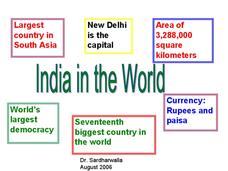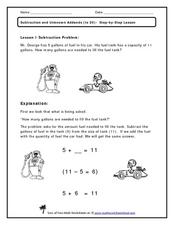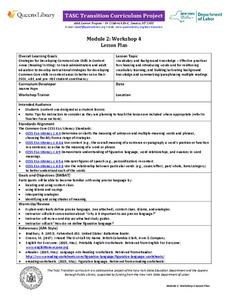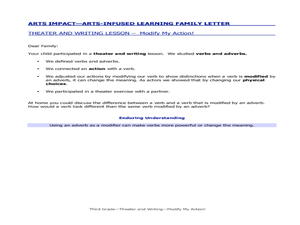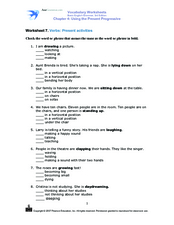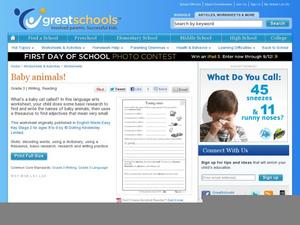Curated OER
Baseball Vocabulary Game: ESL Beginners
The most valuable part of this lesson is the instructions to "Vocabulary Baseball," which can be applied to any vocabulary or key terms list. The game uses word boxes and the autobiography of Roberto Clemente, which the lesson describes...
Curated OER
All About Kennings
The word kenning is derived from an old Norse phrase. It means, "to express a thing in terms of another." Pupils practice identifying and using kennings in the modern English language. This presentation was produced in Britain, and has a...
Curated OER
India
Take a mental trip to India with your class. But before you go, review some basics about Indian culture. Several facts, a break down of the Indian flag, and a list of words adopted from India are all provided. Tip: Adding rich images...
Curated OER
Subtraction and Unknown Addends (to 20)
How many more gallons of fuel does Mr. George need to fill his car to capacity? This word problem uses the unknown addend strategy to get scholars subtracting and thinking about the relationship between mathematical operations. There is...
Curated OER
Forestry and Forestry Products
High school and college learners identify forestry career opportunities. They identify the parts of a tree cross-section and trees based on their leaves and characteristics. Pupils calculate board feet and explain safe methods of...
Curated OER
Cinco De Mayo: ELD Reading and Language-Building
A brief passage about the Mexican holiday Cinco de Mayo is accompanied by an array of language activities for ELD: cloze exercise, phrase matching, word jumble, multiple choice, sequencing, interview, group presentation, fluency writing,...
Curated OER
Derivational Suffixes Worksheet
In this suffixes worksheet, students learn that derivational suffixes change the meaning of words and the part of speech. Students write the original meaning of six words, add the suffix, and write the new meaning.
Curated OER
Advanced Matching-- The Bathroom
In this definition matching worksheet, students draw a line from 11 words to their meanings. All words are parts of a bathroom.
New York State Education Department
TASC Transition Curriculum: Workshop 4
Why is it important to use precise language? Participants explore this question in the fourth activity in a series of 15 on effective instruction. Perfect for all content areas, the activity promotes appropriate language choice through...
Curated OER
Pendemonium: The Italian Job
Students identify prefixes, roots, and suffixes. In this grammar rules instructional activity, students analyze word parts to determine the meaning of unfamiliar words.
Curated OER
Biogeochemical Cycles
Middle schoolers demonstrate comprehension of the energy sources of various cycles by completing mini stories. They demonstrate analysis of words by defining individual word parts and combining them to form definitions. Students...
Curated OER
Connection to Language Arts-The Structure of Medical Terminology
In this structure of medical terminology learning exercise, students read about Latin and Greek roots and match nine medical terms to their definitions using a table of defined prefixes, roots and suffixes.
Curated OER
Word Structure
Young scholars infer the meanings of unfamiliar words using context clues and knowledge of prefixes and suffixes. They identify vocabulary words as nouns or adjectives using context clues and suffixes. In addition, they decide the...
Curated OER
Sail on the Vocabulary Ship
Students make paper ships on which to identify and write root words, prefixes and suffixes.
Curated OER
Introduce: The Suffix -y
Students explore language arts by participating in a word structure activity. In this suffix lesson plan, students identify what a suffix is and discuss the common uses for the "y" suffix. Students add the specific suffix to many words...
Curated OER
Modify My Action
Third graders listen to directions as they perform a theatrical role. In this vocabulary lesson, 3rd graders listen to and observe the adjectives given to them during a practice of their performance by the director. Students identify...
Curated OER
Grammar Practice: Lie vs. Lay
Are your pupils caught in the lie/lay confusion? Give them extra practice with a instructional activity that defines the difference in meaning, conjugates the words, and gives examples of how the two verbs are used. Learners then...
Curated OER
Advanced Synonyms and Antonyms - Adjectives 1
In this advanced synonyms and antonyms worksheet, students read the definitions of synonyms and antonyms before answering 12 multiple choice questions about adjectives. They find synonyms for 6 words, and antonyms for 6 words. They work...
Curated OER
Advanced Synonyms and Antonyms - Adjectives 4
In this synonyms and antonyms worksheet, students read the definitions of synonyms and antonyms before answering 12 multiple choice questions. They find the synonyms for the given words in the first 6 questions, and the antonyms in the...
Curated OER
Advanced Synonyms and Antonyms - Adjective 7
In this synonyms and antonyms worksheet, students read the definitions of synonyms and antonyms before answering 12 multiple choice questions. They choose the best synonyms for the first 6 words and the best antonyms for the last 6. They...
Curated OER
Advanced Synonyms and Antonyms- Multiple Choice- Verbs 3
In this synonyms and antonyms worksheet, learners choose the best synonyms from 5 choices for 6 words. Students then choose the best antonym for 6 more words.
Curated OER
Beginning Synonyms and Antonyms - Multiple Choice - Verbs 1
We most commonly look at synonyms and antonyms in terms of adjectives. If something is the opposite of small, it's large. Shift the focus from adjectives to verbs with this practice sheet. The first exercise asks the pupil to find the...
Curated OER
Using the Present Progressive
What is the present progressive, and how does it change a verb's meaning? There are eight sentences on this worksheet, and each contains a verb already in the present progressive. The pupil studies the bolded word (in present progressive...
Curated OER
Young Ones
This is the cutest reference materials activity ever! Researchers complete six sentences on baby animal names, continuing the pattern by writing five more sentences about other animals from their research. They use a thesaurus to look up...




